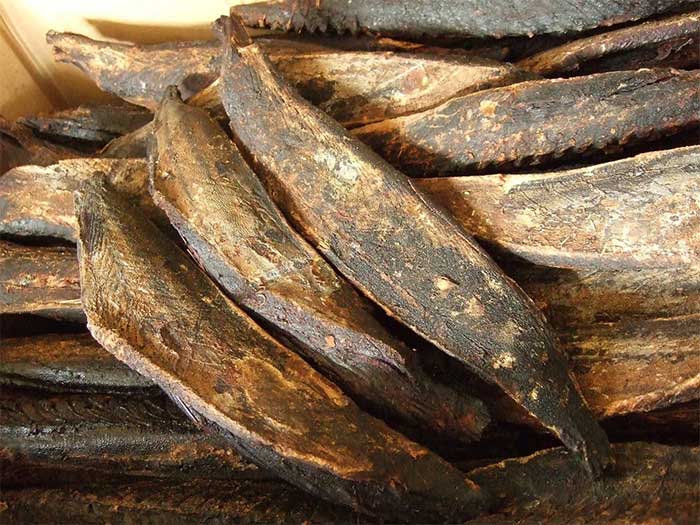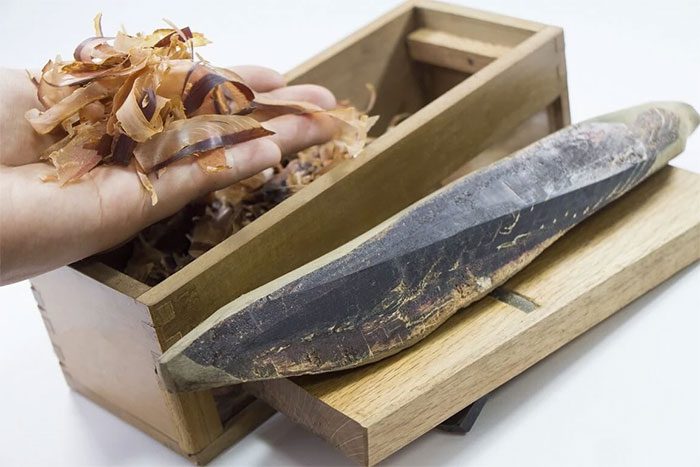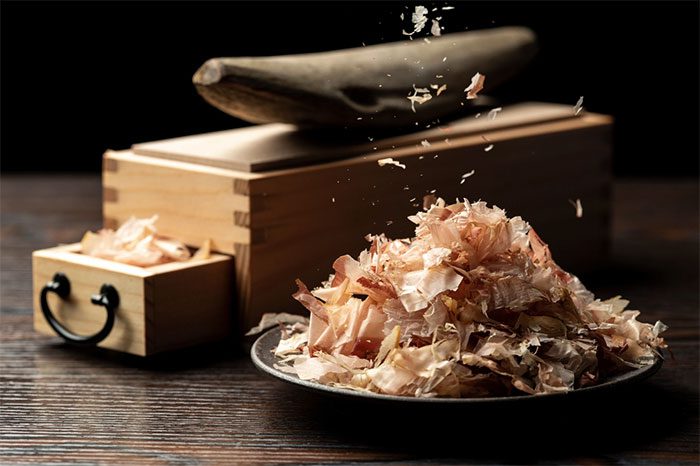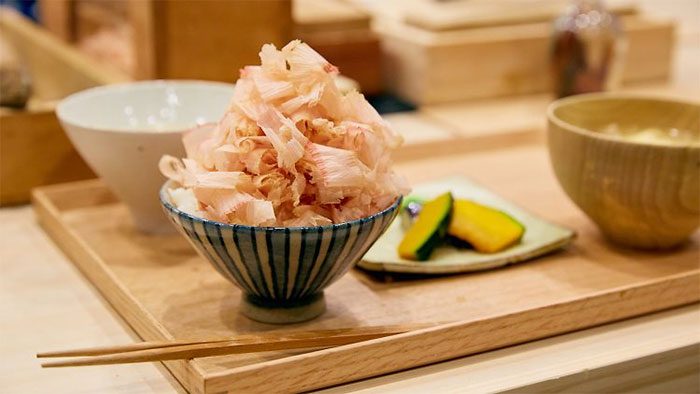If you’re encountering this ingredient for the first time, you might mistake it for a piece of wood, as it is hard and completely devoid of flavor. However, it is an indispensable part of the cuisine of a country renowned for its longevity.
If you love Japanese cuisine, you will certainly notice that the people here have a strong preference for fish. The Japanese can prepare fish in many exquisite dishes, such as sushi, sashimi, grilled fish… One of the most famous fish dishes from the Land of the Rising Sun is Katsuobushi.

Katsuobushi can easily be mistaken for a piece of wood.
At first glance, many people would not think that this is an edible item, as it looks just like a block of wood. However, in reality, this ingredient is made from skipjack tuna, which is a hallmark of Japanese cuisine.
The process of drying and smoking fresh skipjack tuna to create katsuobushi is quite intricate and can extend up to six months. Because of this, this ingredient is also considered one of the hardest foods in the world.
Intricate Production Process
Katsuo in Japanese refers to skipjack tuna, the main ingredient of katsuobushi. The name Katsuo is derived from the Latin name of the fish, Katsuwonus Pelamis. Each region of Japan has its own variant. However, generally, the traditional production of this food requires a significant amount of time.
The process begins with cleaning the fish, cutting it into four fillets, and simmering them over low heat for several hours before removing all the bones. Each fillet is then coated with fish powder to fill any gaps left by bone removal, creating a smoother surface before being smoked for a month.
Next, the outer layer of the fish is scraped off, and kōji mold is sprayed on. During the mold cultivation process, the mold is continuously scraped away until its growth halts. This method is quite similar to the making of other fermented foods like miso and sake.

Katsuobushi is produced with great care.
The craftsman will spray Aspergillus glaucus mold on each piece of fish and allow them to cultivate the probiotics in a controlled environment. The mold is continuously scraped away until growth stops, resulting in fish that becomes hard and dry like a piece of wood. This process can last from several months to over a year, resulting in fish that looks like a wooden block and weighs about one-fifth of its original weight.
In the end, the fresh tuna product becomes as hard as wood. When tapped together, they produce a clinking sound. Some special types of shaved fish can take over two years to complete.
The lengthy production process, requiring much skill, results in a high market price for this ingredient. According to surveys, online markets in Vietnam sell shaved katsuobushi for around 1-1.4 million VND per kilogram.
An Essential Ingredient in Japanese Dishes
To use this wood-like ingredient, you need to shave it finely. Typically, the Japanese use a kezuriki wooden plane, which features sharp blades on the lid and a drawer to catch the shaved fish flakes below.
The piece of fish may not have an eye-catching color. However, when shaved thinly, it reveals a pale pink interior that can stimulate the palate.

When shaved thinly, it reveals a pale pink interior that can stimulate the palate.
Katsuobushi has a salty flavor with a hint of fishiness, similar to a snack, so you can eat it on its own. However, the Japanese often incorporate this ingredient into dishes such as hiyayakko (cold tofu), okonomiyaki (savory pancakes), or takoyaki (octopus balls). Additionally, it is used to make dashi broth for miso soup, udon noodles, and chawanmushi (steamed egg custard)…
The reason katsuobushi is beloved and popular in Japan is that the kōji mold (or probiotics) contributes to its flavor. The mold absorbs moisture, allowing the fish to dry out quickly. Moreover, it breaks down the fats in the fish into soluble fatty acids, enhancing the flavor and aroma of the fish.

Katsuobushi becomes more appealing once shaved thinly.
Furthermore, katsuobushi is rich in vitamin B12, niacin, and iron, which are excellent for health. It helps prevent high blood pressure, enhances liver function, and reduces heart-related diseases. This is one of the key ingredients contributing to the remarkable longevity of the Japanese people. In fact, many consider it a secret to longevity.





















































